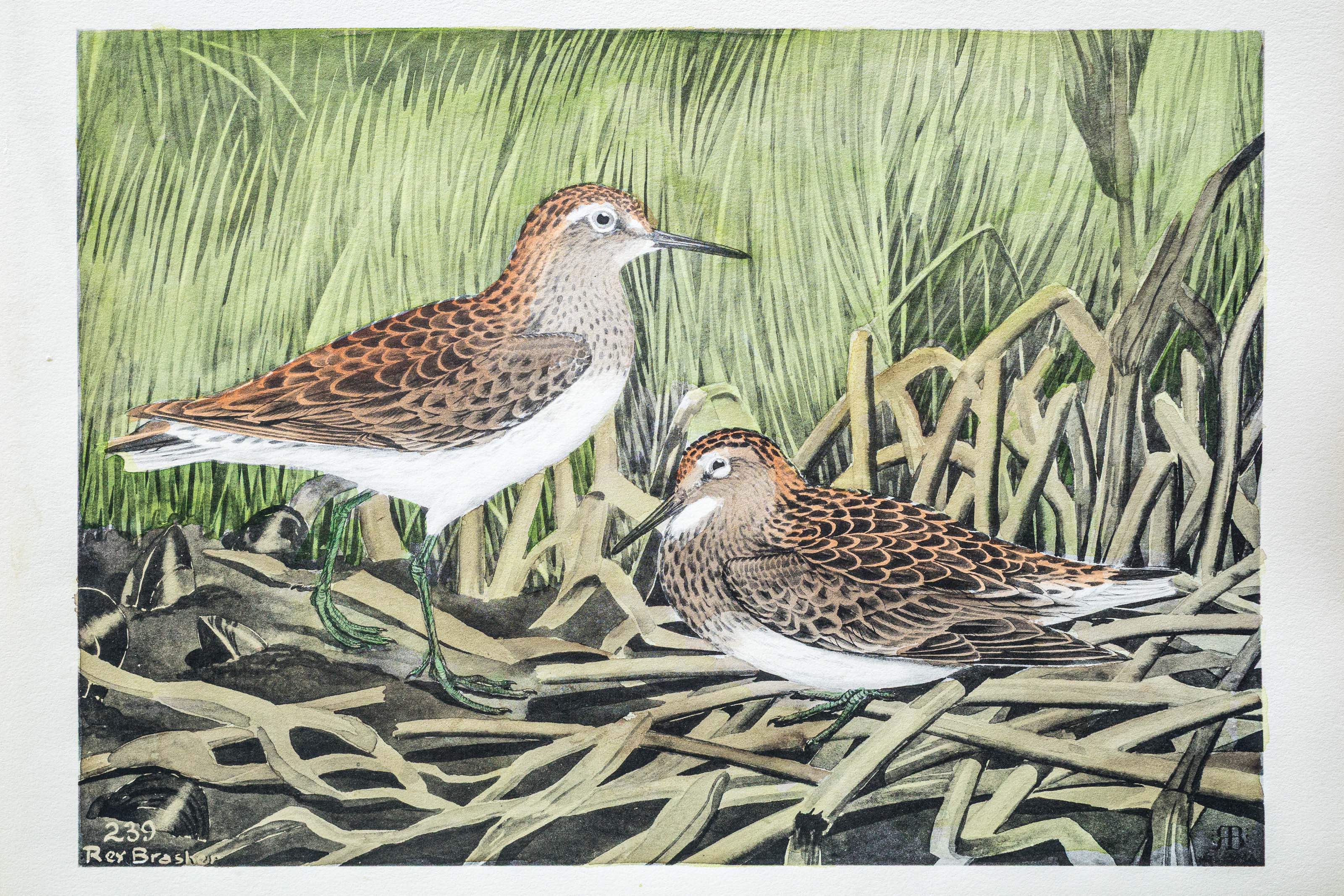
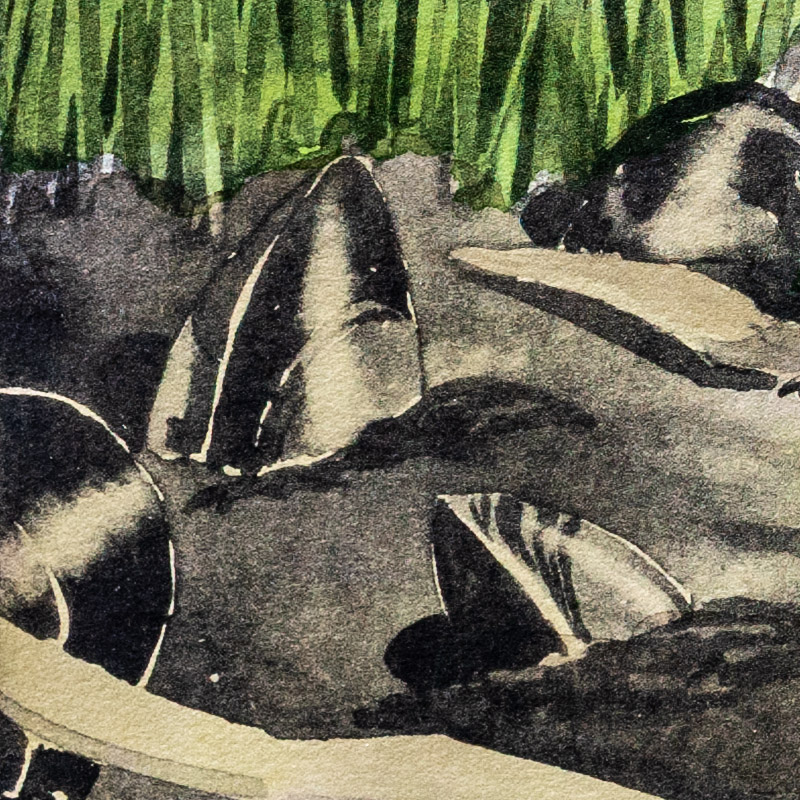
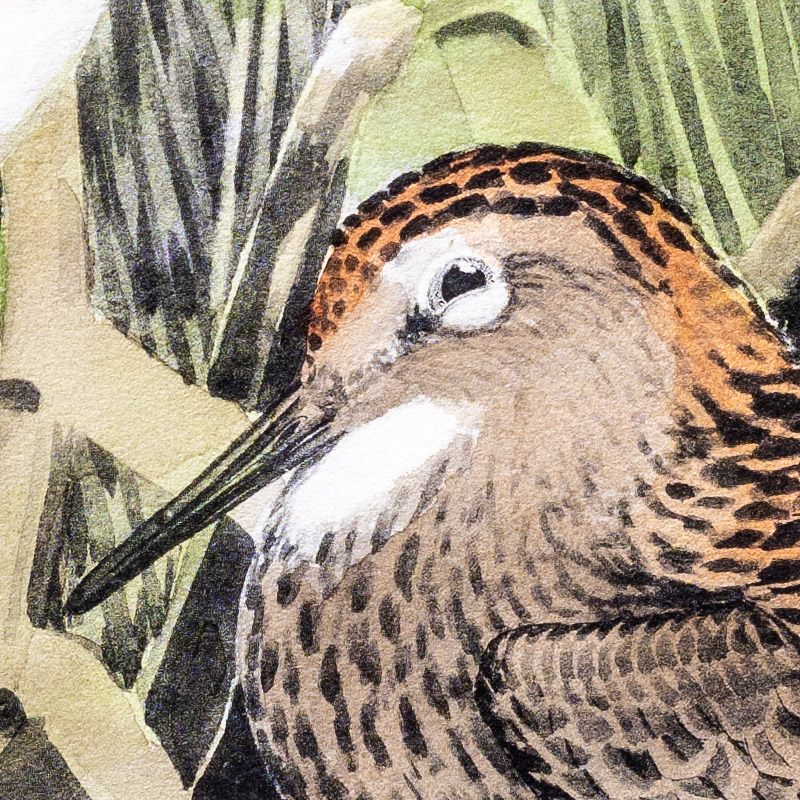

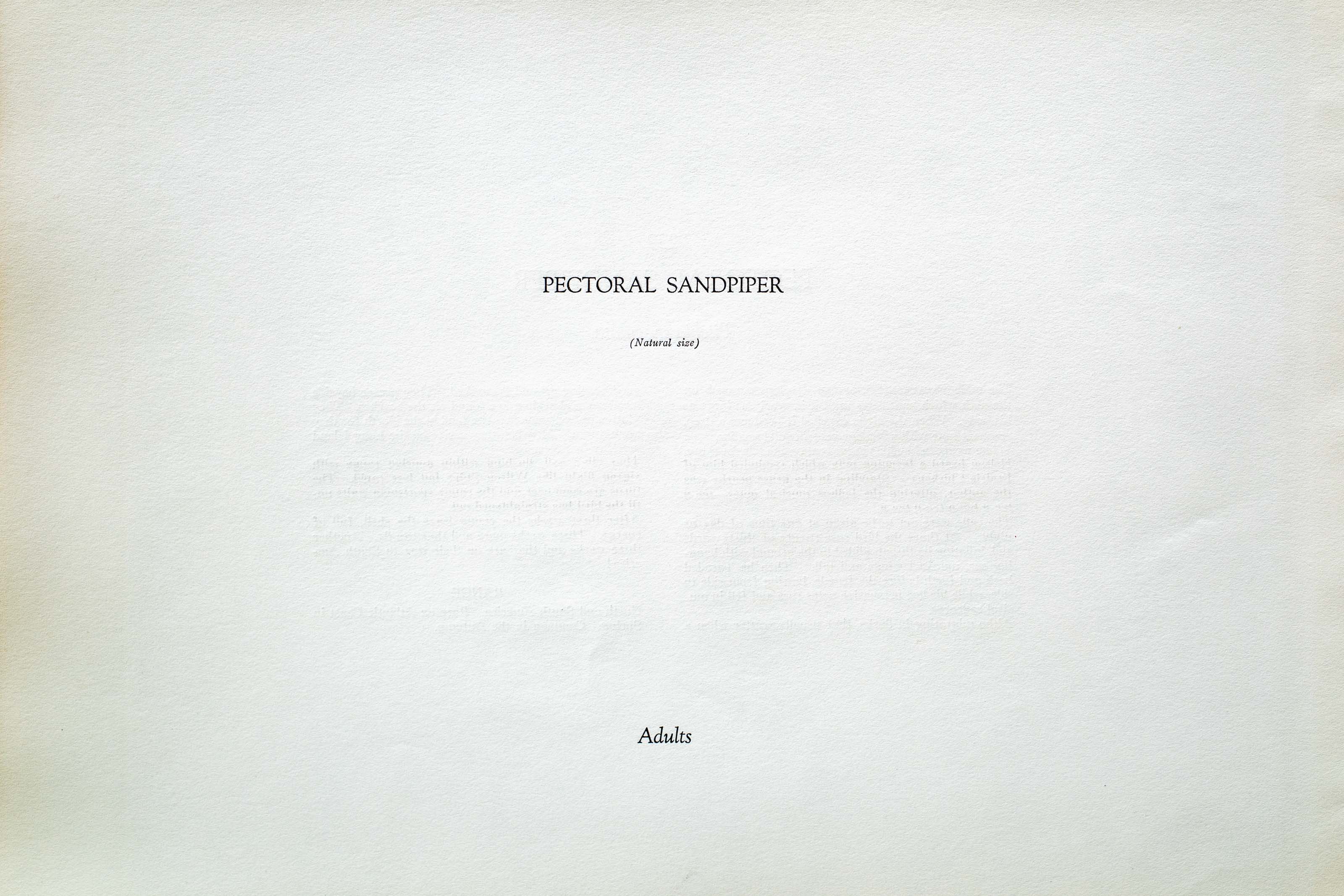
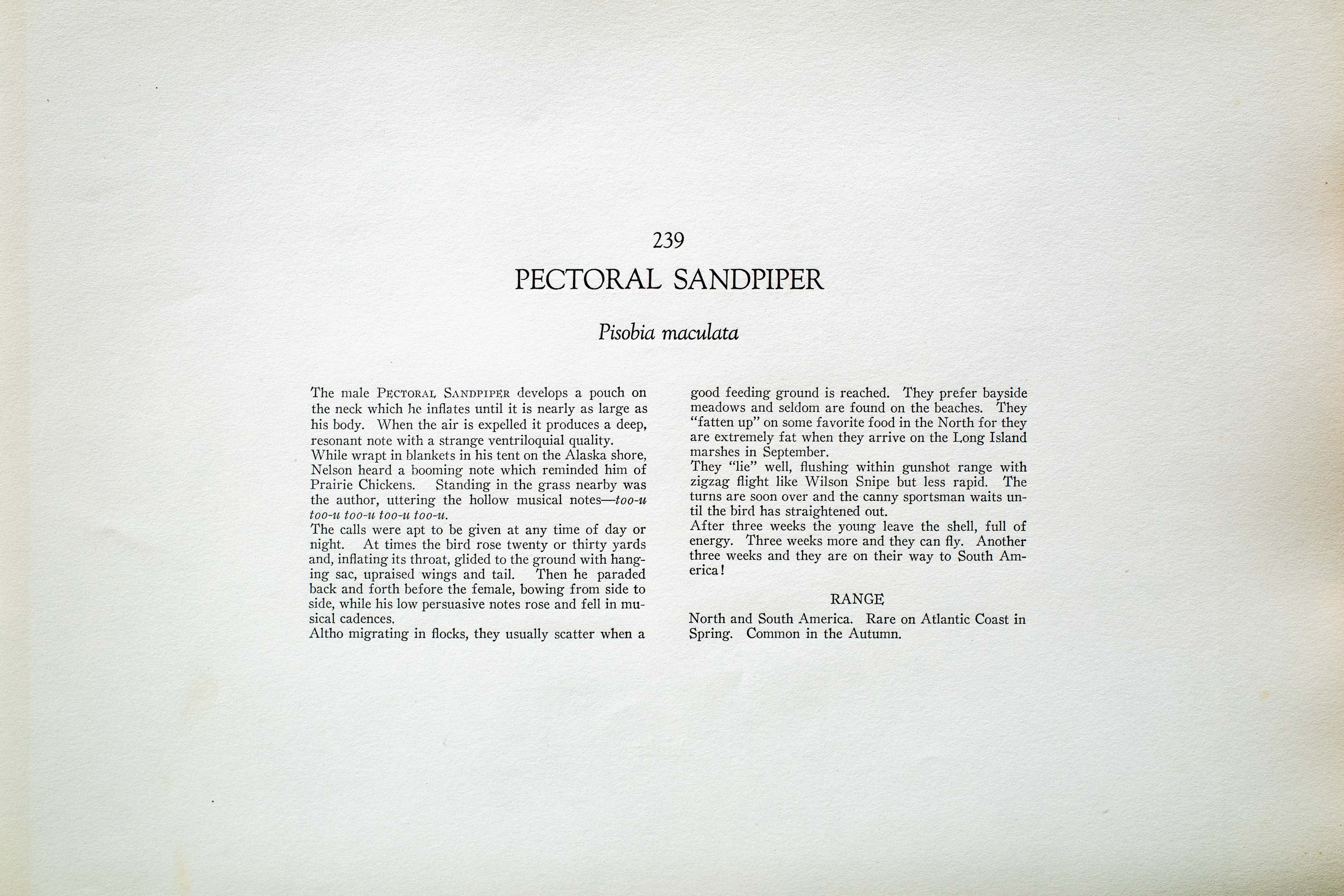

Unknown
1930
4
239
A team of dedicated board members, volunteers, and student interns has published every page in Volume 9. This volume includes 360 images of paintings and lyrical descriptions of birds, now available online for everyone to enjoy anywhere in the world. This is a monumental task. Each volume requires approximately 400 hours to photograph, edit, transcribe, catalog, and publish online. We need your support to complete this work.
If you're tech-savvy, have a good eye, are meticulous with details, and love structured data, please consider volunteering by emailing us at hello@rexbrasher.org.
We encourage all bird lovers and supporters to consider a monetary donation to support our mission to make Rex's work available for everyone. You can provide a one-time or recurring donation online.
The male PECTORAL SANDPIPER develops a pouch on the neck which he inflates until it is nearly as large as his body. When the air is expelled it produces a deep, resonant note with a strange ventriloquial quality.
While wrapt in blankets in his tent on the Alaska shore, Nelson heard a booming note which reminded him of Prairie Chickens. Standing in the grass nearby was the author, uttering the hollow musical notes — too-u too-u too-u too-u too-u.
The calls were apt to be given at any time of day or night. At times the bird rose twenty or thirty yards and, inflating its throat, glided to the ground with hanging sac, upraised wings and tail. Then he paraded back and forth before the female, bowing from side to side, while his low persuasive notes rose and fell in musical cadences.
Altho migrating in flocks, they usually scatter when a good feeding ground is reached. They prefer bayside meadows and seldom are found on the beaches. They "fatten up" on some favorite food in the North for they are extremely fat when they arrive on the Long Island marshes in September.
They "lie" well, flushing within gunshot range with zigzag flight like Wilson Snipe but less rapid. The turns are soon over and the canny sportsman waits until the bird has straightened out.
After three weeks the young leave the shell, full of energy. Three weeks more and they can fly. Another three weeks and they are on their way to South America!
North and South America. Rare on Atlantic Coast in Spring. Common in the Autumn.